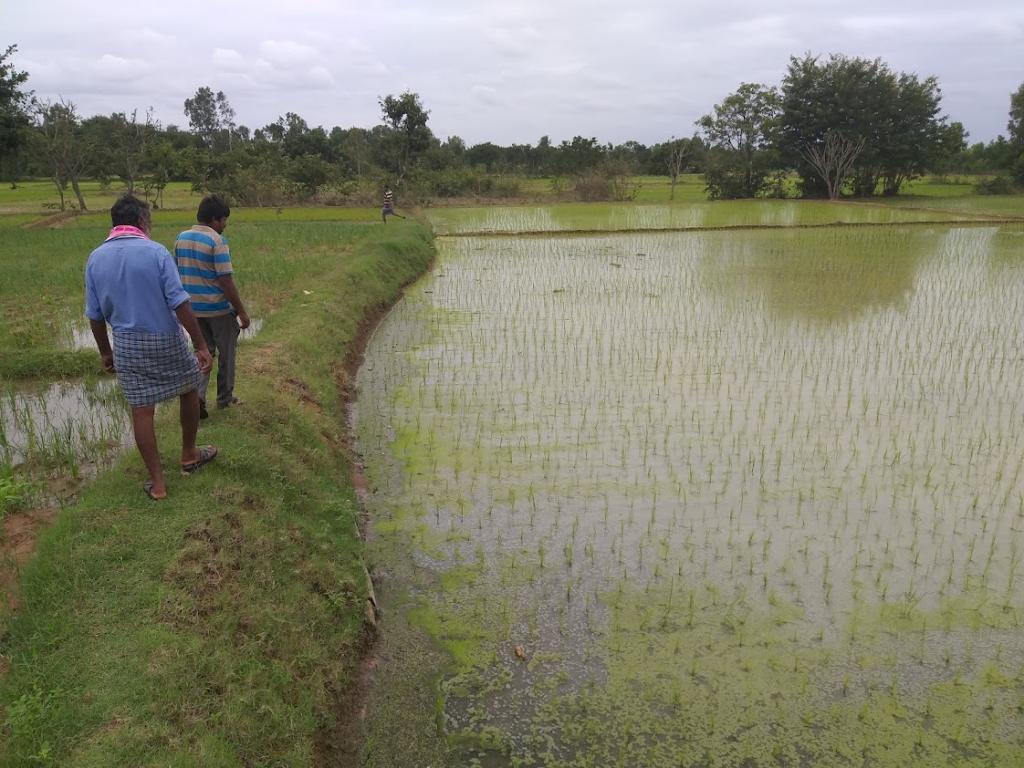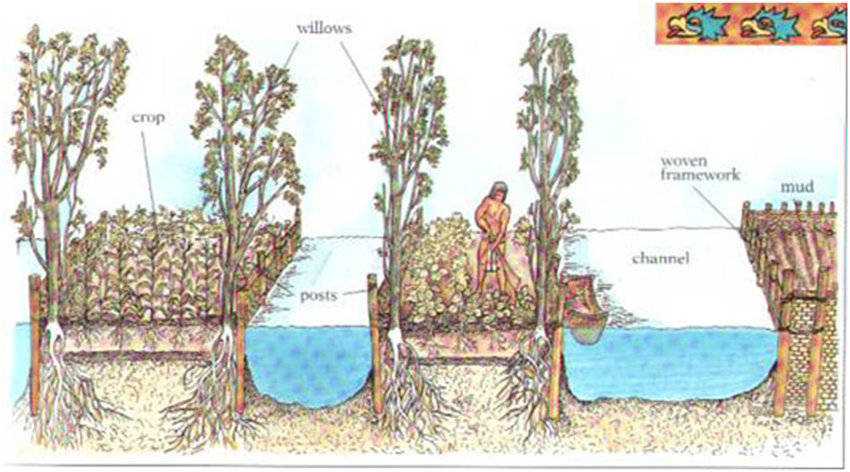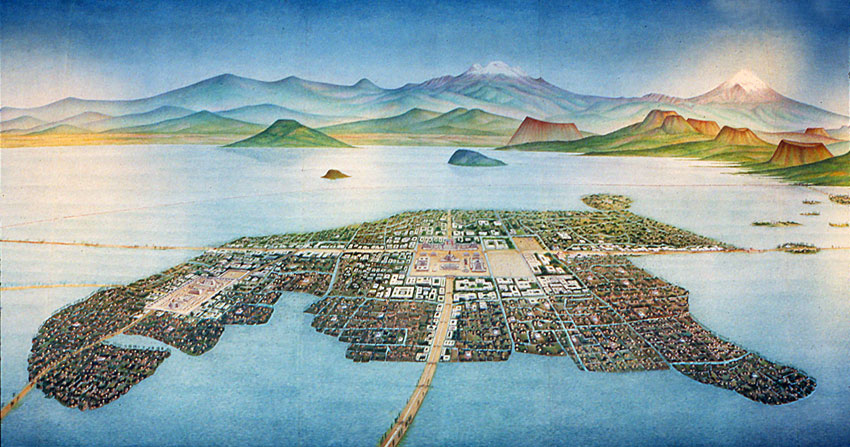If there is magic on this planet, it is contained in water. Loren Eiseley
Fluvial Cities. The history of fluvial structures in pre-modern times is a fascinating story of ancient technology and its sacred imaginaries. Water Infrastructure and the vicissitudes of its composition as flow, philosophical subject, memory, the discrete, the self-assembled, and exploitation of belief systems produced oral histories and folklore—water infrastructure is a technological driver of myth, logic, and environmental history.
Storytelling is one of the most compelling and deep-rooted methods of passing knowledge between cultures. “Narrative enables connectivity in the present, sharing knowledge in an accessible form, which can change the ways we approach an uncertain future” (Morgan & Smith, 2013). Anthropologist Esha Shah interprets the intermixing of folklore narratives and techniques in India’s tank irrigation technology as “talking literature,” unlike post-colonial historiography and European technological discourse based on rationality. Shah describes the pre-modern tanks of South Karnataka made by builders called Voddas (AD 1300-1750) as “social storage.” Tank construction was performed under the mandate of village chieftains for rice field irrigation and in exchange for successful operation conditions, they offered their daughters to deities The fluvial infrastructures of Karnataka are embedded with folk tales, songs, and oral history of the region, cultural evocations rooted in the tanks that resonate as sediment on the present (Shah, 2008).

Karnataka’s irrigation infrastructure reveals how traditional (oral, written, and technical) systems form a different water ontology, beyond performance (what it does) or representation (what it is). However, a third formal manifestation of indigenous knowledge is temporal and aesthetic, producing a deliberate foundation or “entrance” (Kubler), a space-time aura of the work itself. As Shah states,” folk literature, not as an inviolate historical record, but a work embedded in memory” (Shah, 2008).
In architectural and urban post-colonial critiques, the reexamination of native techniques from Mesoamerica is influencing academic research. For example, raised bed wetland agriculture known as chinampas built by the Aztecs in the Chalco-Xochimilco drainage basin of the Valley of Mexico (AD 1428-1519) functioned as a source of food for the lacustrine city of Tenochtitlan. These food islands system took 40 years to conclude, and their construction was part of a forced work regime of 25 million person-days in lands under Aztec control (Arco & Abrams, 2006).

According to James Maffie, Aztec metaphysics is based on the concept of teotl. An ontological monism, a reality characterized by becoming instead of being. Within this philosophical belief, along with olin and malinalli, the principle of nepantla binds together creative and deconstructive agonistic tension of transformation. Therefore, all processes of becoming occur through weaving and the woven (a smooth Deleuzian space, if I may). Aztecs lived in woven houses and fabricated woven clothing, and their agricultural fields (chinampas) were correspondingly woven (Maffie, 2014). The chinampas were part of the extensive hydrological infrastructure, which played a significant role in the population’s subsistence and linked the empire and their gods (Coe, 1964).
The collective memory embedded in these structures aggregated through hybridization of knowledge, beliefs, and indigenous know-how solved particular infrastructural demands of Meso-American civilizations. However, during Spanish rule and centuries of hydrological dredging, the clay subsoil of the lakebed began to dry and erode. Five centuries later, the ground in Mexico City has subsided approximately ten meters, causing the collapse of sewer and storm drain infrastructure. Hydrological systems can fail through discrete perturbations when natural and human processes respond to climatic or systemic variability.
Like Tenochtitlan, the ancient city of Angkor in modern Cambodia, Southeast Asia, suffered from infrastructural deterioration from seasonal rainfall, erosion, and sedimentation, creating unpredictable network topological failure (Penny, et al., 2018) During its 600-year history (AD 800-1400) and similar to its Mesoamerican counterpart, Angkor established a system of canals and reservoirs to capture and distribute water for a city with an area of 1000 km2. The sophistication of the spatially extensive system, with its thousands of components, made it challenging to maintain and coincided with climate variability. Angkor’s palimpsest water network produced a cascading set of failures that made its inhabitants abandon the city. Angkor’s demise research demonstrates that pre-modern urban settlements suffered an infrastructural failure, a critical phenomenon of a self-organizing system when transformed by human or climatic perturbations (Penny, et al., 2018).

https://www.smithsonianmag.com/history/angkor-wat-reservoir-engineering-catastrophe-180974227/
Sacred water. Intimate and autonomous forms of monastic living were made bearable by water infrastructure during the Middle Ages. Ritual and seclusion have correlated well with water’s presence, flows, and containment throughout human history. Water casts a spiritual and mystical aura in addition to its health and sanitary properties. In the medieval Carthusian Charterhouse of Bourgfontaine (ca.1323), water was provided for personal use. According to historians Sheila Bonde and Clark Maines, “Compared to the monasteries of other orders, charterhouses were relatively few in number, and very few of their water-management systems have been studied. Bourgfontaine offers good information about a relatively well-preserved Carthusian site and provides new information about medieval methods of locating underground springs, channeling water, and transporting it by means of a siphon across a topographically irregular site” (Bonde & Maines, 2012) In the design of the charterhouse, we see hydraulic infrastructure combined competently with knowledge of topographical grading and site modification. “Medieval hydrologists harnessed a variety of technologies and exploited the natural potential of their sites” (Bonde & Maines, 2012). In Bourgfontaine, the drive to build an allocated hydrological system contained a set of requirements that produced adequate living conditions enabling its occupants to have water in their monastic cells. Water systems were managed, scaled, and detailed during the Middle Age for diversified needs. Bond and Maines suggest that monasteries were repositories of technological knowledge, and Christianity viewed the domination of water as a statement and powerful form of spiritual intent (Morgan & Smith, 2013).

Water as Muse. In the last 200 years’ water has gone through a process of secularization. As our theories of nature and the cosmos scientifically evolved, they transformed the relationship of water with society. Today water is part of the instruments of political and resource structures. However, a constant narrative permeates the landscape of water systems, from infrastructures of power like dams and reservoirs to the most intimate water features designed for contemplation, an ongoing dialogue between the metaphysical and the rational. According to Morgan and Smith, “historically, water management has been predicated upon belief; belief in divinity, belief in human agency, and belief in scientific progress” (Morgan & Smith, 2013).
A contemporary example that comes to mind is the central courtyard of the Salk Institute in La Jolla, California (1962-1965). Renowned architect Louis Khan designed a building for Dr. Jonas Salk, who developed the polio vaccine and imagined the complex as a scientific monastery. From the onset of the building design, Khan had proposed an “architecture of water” as part of the concept (Brownlee & Long, 1992). The concrete brutalist forms of the building are reminiscent of contemporary Bourgfontaine, a monastery of knowledge, laboratories, and offices cloistering around a central open courtyard. A water trough cuts through the middle of the courtyard and disappears into the horizon of the Pacific Ocean, expressive of the essence of wellbeing, reflection, and scientific discovery.

Bibliography
Arco, L. J., & Abrams, E. M. (2006). An Essay on energetics: The Construction of the Aztec chinampa system. Antiquity 80, 906-918.
Bonde, S., & Maines, C. (2012). The Technology of Medieval Water Management at the Charterhouse of Bourgfontaine. Technology and Culture, 625-670.
Brownlee, D. B., & Long, D. G. (1992). Louis Khan: In the Realm of Architecture. New York: Rizzoli.
Coe, M. D. (1964). The Chinampas of Mexico. Scientific American, 90-99.
Maffie, J. (2014). Aztec Philosophy: Understanding a world in motion. Boulder: University Press of Colorado.
Morgan, R. A., & Smith, J. L. (2013). Pre-modern Streams of Thought in Twenty-First-Century Water Management. Radical History Review, 105-129.
Penny, D., Zachreson, C., Fletcher, R., Lau, D., Lizier, J. T., & Nicholas Fisher, D. E. (2018). The demise of Angkor: Systemic vulnerability of urban infrastructure to climatic variations. Science Advances.
Shah, E. (2008). Telling Otherwise: A Historical Anthropology of Tank Irrigation Technology in South India. Technology and Culture Vol. 49, 652-674.

